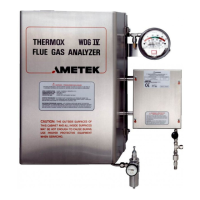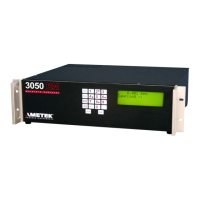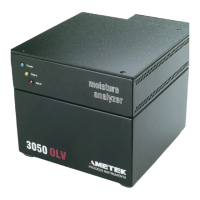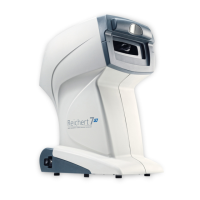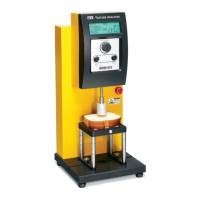PN 903-8797, Rev A
To resolve XSCode into its constituent primary codes, subtract the largest
possible primary code (as seen in the “Extended Status Code” troubleshooting
chart) from the displayed code (which is the total sum of all primary XSCodes
found) and then subtract the next largest possible primary code, etc., until the
remaining value is the smallest possible primary XSCode. At each step, the pri-
mary XSCode being subtracted must not be larger than the remaining value.
Example 2:
The analyzer is in Standby Mode, the displayed SCode is “125”, and the XSCode
is “294”. The length of time that the analyzer has been in Standby Mode is not
known. These primary codes are resolved as follows:
First, resolve SCode:
125 Total sum of all primary SCodes found
- 64 f HC Optics [Problem-In-Hydrocarbon-Side-Optical-Path]
61 Remaining sum of all primary SCodes found
-32 f H2O Optics [Problem-In-Water-Side-Optical-Path]
29 Remaining sum of all primary SCodes found
-16 w Dirty Cell [Possible-Cell-Contamination]
13 Remaining sum of all primary SCodes found
-8 w Check XSCode [Advice – Review-Extended-Status-Code]
5 Remaining sum of all primary SCodes found
-4 w No HC DP [Hydrocarbon-Dewpoint-Temperature-Not-Found]
1 w TimeOut [Stage-Time-Out]
Next, resolve XSCode:
294 Total sum of all primary SCodes found
-256 f H2O Dim [Light-Intensity-On-Water-Side-Is-Too-Low]
38 Remaining sum of all primary SCodes found
-32 w High DP [Hydrocarbon-Dewpoint-Temperature-Too-High]
6 Remaining sum of all primary SCodes found
-4 w Cool TimeOut [Cooling-Stage-Time-Out]
2 w Hold TimeOut [Purging/Hold-Stage-Time-Out]
Maintenance and Troubleshooting | 4-43

